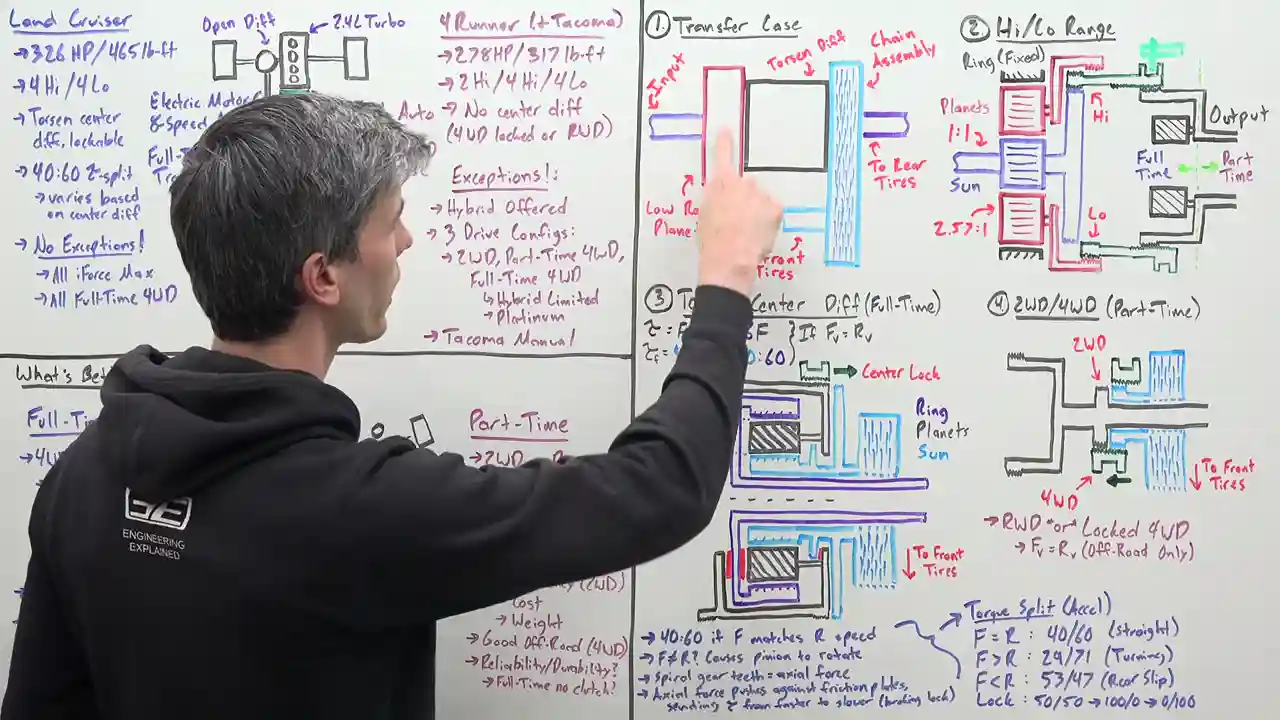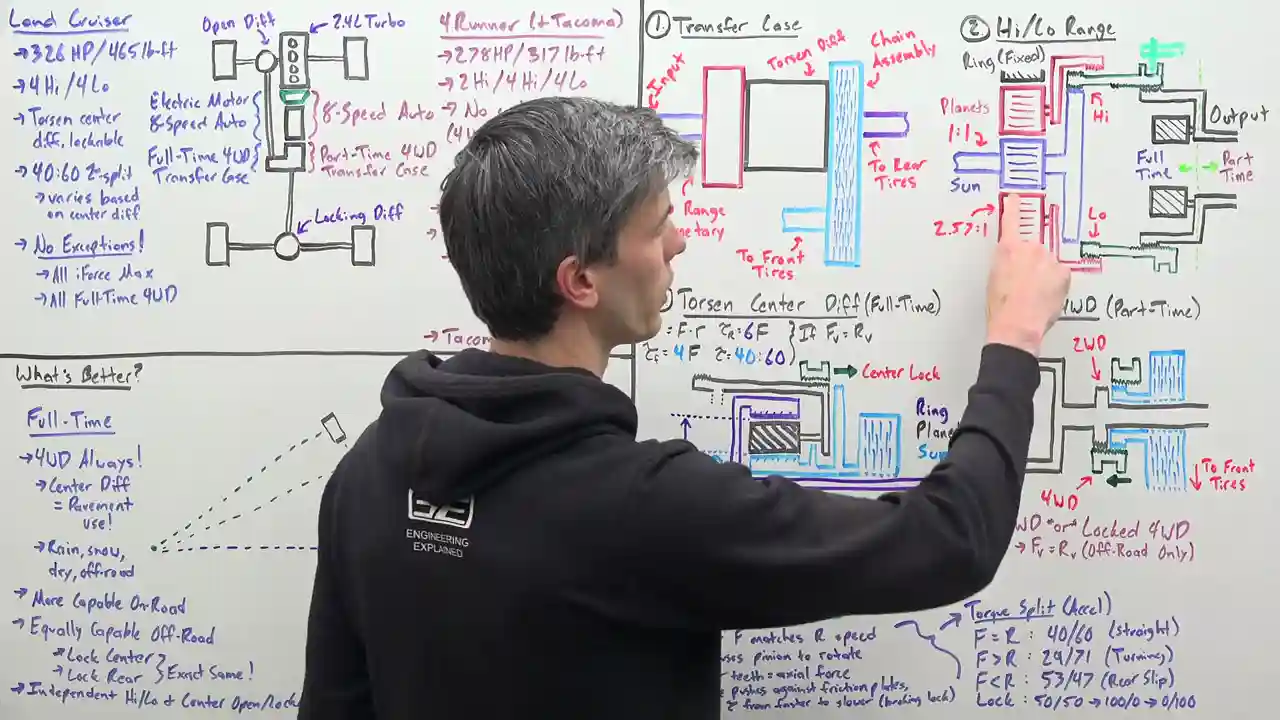Toyota Land Cruiser vs 4Runner: 4WD Systems Compared

- Authors
- Published on
- Published on
- Name
- By Dushyant
- (@dishs)
In this epic showdown, Engineering Explained pits the legendary Toyota Land Cruiser against the rugged Toyota 4Runner to determine which reigns supreme in the realm of four-wheel drive systems. The Land Cruiser boasts a full-time four-wheel drive setup with a sophisticated center differential, delivering a 40/60 torque split for unparalleled traction on any terrain. On the other hand, the 4Runner opts for a part-time system without a center differential, limiting its pavement capabilities compared to its more versatile counterpart.
Diving under the hood, both vehicles pack a punch with a 2.4L turbocharged engine mated to an 8-speed automatic transmission. However, the Land Cruiser takes the lead with a hybrid system, offering a power boost and enhanced efficiency that sets it apart from the 4Runner. While the Land Cruiser comes standard with full-time four-wheel drive, the 4Runner provides flexibility with various drive configurations, including rear-wheel drive and part-time four-wheel drive options.
The heart of the debate lies within the transfer case, where the Land Cruiser's Torsen differential and e-locker for the rear wheels provide superior control and traction off-road. In contrast, the 4Runner's absence of a center differential restricts its pavement use, highlighting the trade-offs between the two systems. From torque distribution to handling wheel slip, each vehicle showcases unique strengths that cater to different driving scenarios, whether conquering rocky trails or navigating city streets with finesse. Ultimately, Engineering Explained sheds light on the nuances of these four-wheel drive systems, offering enthusiasts a deeper understanding of the technology that propels these iconic off-road machines.

Image copyright Youtube

Image copyright Youtube

Image copyright Youtube

Image copyright Youtube
Watch Toyota 4Runner vs Land Cruiser - Which 4WD System Is Best? on Youtube
Viewer Reactions for Toyota 4Runner vs Land Cruiser - Which 4WD System Is Best?
Viewers appreciate Jason's explanations and teaching style
Request for a video on planetary gear sets
Comparison between Jason from Engineering Explained and Ryan from FortNine
Positive feedback on the video's explanation of Toyota's off-road systems
Request for more videos explaining different AWD systems
Discussion on the Toyota 4Runner's different generations and features
Request for a video on LFP batteries
Personal experiences and preferences with full-time vs. part-time 4WD
Questions about how Jeep Compass AWD system works
Comments on Land Cruiser models and their 4WD capabilities
Related Articles

Unveiling Corvette ZR1: Acceleration Secrets and Track Dominance
Engineering Explained reveals the Corvette ZR1's astonishing acceleration, custom launch control secrets, hidden red line, and exceptional handling capabilities, showcasing its dominance on the track.

GM Engine Failures: Thicker Oil Solution Revealed
Engineering Explained uncovers GM's engine failures due to manufacturing defects, recommending a switch to thicker oil for optimal engine performance and longevity.

Exclusive Review: Cadillac Celesteic Unveiled - Luxury & Innovation
Experience the Cadillac Celesteic: a $350,000 flagship sedan with 655 hp, 303 mi range, and unique manufacturing techniques like massive aluminum castings and 3D printed metal parts. Discover the luxury of low-volume production and innovative design in this exclusive review.

Revolutionizing Downforce: McMerry Spearling's Impact on Racing
The McMerry Spearling revolutionizes downforce creation with fan technology, showcasing remarkable efficiency and potential for Formula E and Formula 1.
